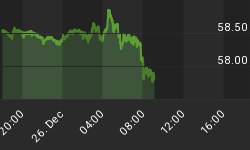The following chart tells two stories. The first is that the deficit spending and debt monetization of the past few years has calmed the markets. Volatility (more accurately fear), as measured by the VIX index of S&P 500 options, has meandered back below 20, implying that most financial market players are pretty relaxed about the world's near-term prospects.

The second thing this chart says is that whenever the VIX drops into the 10-15 range for an extended time, craziness ensues. A lack of fear leads to overoptimistic investment decisions, which in turn produce big corrections. The resulting turmoil in the options markets is what the VIX measures.
In most cases, a VIX move back above 20 is followed by a quick spike above 30 and sometimes 40. With debt ceiling negotiations deadlocked and the deadline approaching, US stock futures are down nearly 1% as this is written on Sunday evening, implying that traders are spooked and pointing to a possible VIX move above 20 next week. Then, if history is any guide, the fun begins.
The simplest way to play a spike in volatility is with a "long volatility" exchange traded note (ETN) like VXX. If VIX spikes, VXX will keep it company. But be aware that VXX is strictly a trading vehicle. It uses derivatives to replicate the VIX and (without going too deeply into how it happens) over time these instruments depreciate, causing VXX and other similar ETNs and ETFs to gradually lose value. So place the bet and then, win or lose, close it down within a month. But it might be an interesting month.
















